Xiaomi continues to impress us with its dedication to being a top camera-centric smartphone brand.

In its second year partnership with Leica 13, Xiaomi is putting together the best in hardware, software, and engineering into the Xiaomi 14 Ultra to take on other heavyweights in smartphone photography, like the Samsung Galaxy S24 Ultra and the iPhone 15 Pro Max.
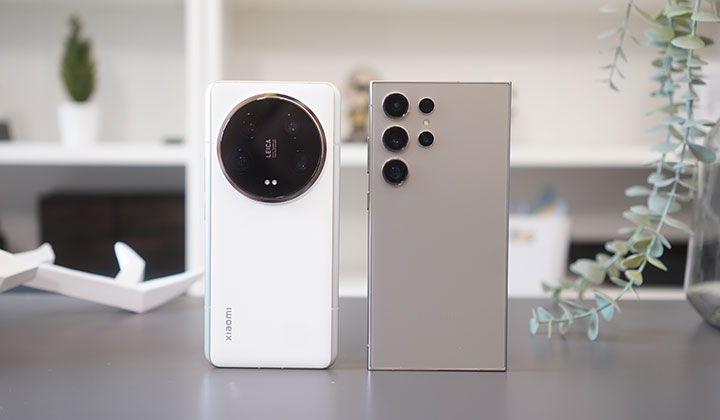
And it seems to be bearing fruit. Read on and check our full review of the Xiaomi 14 Ultra to learn why.
Table of Contents
Just like its predecessors, expect the Xiaomi 14 Ultra to be on the thicker (9.2mm) and heavier side (219.8 grams). This is mostly due to the 1-inch type sensor used as the main camera and the three other Sony IMX858 sensors, which might be way smaller in size but still require additional space.

Compared to the Xiaomi 13 Ultra (227 grams) and the Xiaomi 12S Ultra (225 grams), the Xiaomi 14 Ultra is a teeny bit lighter although it has gotten a bit thicker as well (9.2mm vs. 9.06mm and 9.1mm, respectively). That does not include the protruding camera module, so you get an idea how thick this device is. Good thing the 3D curve glass up front and the tapered edges at the back provide good grip support to lessen that bulky feel of the device.

Holding the phone with one hand is still comfortable when making calls, texting or browsing the internet. However, once you hold it horizontally to watch videos or play games, you will definitely feel the cumbersome effect of the huge camera bump. Not the most comfortable hold especially if you are playing games for long hours.
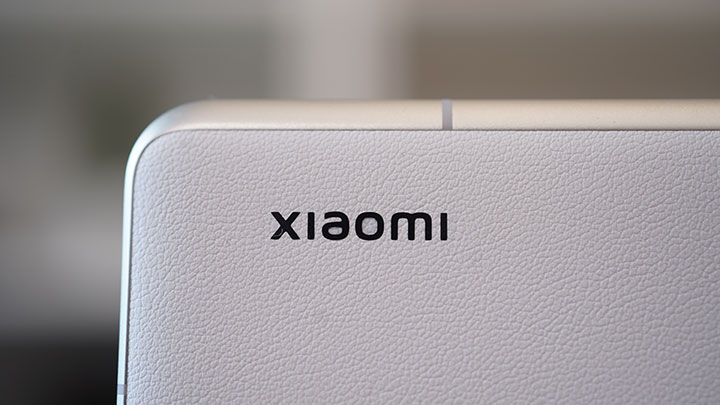
The design of the Xiaomi 14 Ultra was inspired by the centennial classic LEICA M10-P. The back panel uses the latest nano-tech vegan leather claims to be stain-resistant and has antibacterial properties. Of course, you don’t get any problems, such as fingerprints and smudges on the back. You can actually comfortably use this device naked or without the case on!
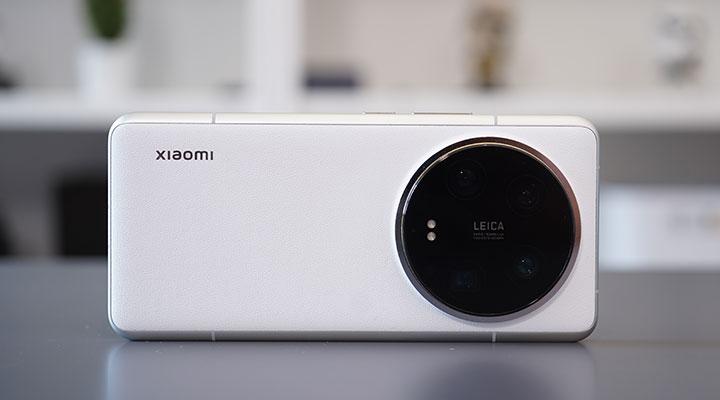
The volume rocker and textured power button are on the right side; second speaker grill up top; USB Type-C charging port at the bottom, along with the main speaker grill, primary mic and SIM card slot — leaving nothing on the left side except for antenna bands.
The secondary noise-canceling microphone is actually hidden within the camera module along with the IR blaster which you can use for pairing with home appliances.
When placed on a flat surface, the device does not wobble because of the symmetrical placement of the camera bump.

While not unique to Xiaomi, this glass-metal-leather material in a symmetric design approach has had intimate association with the Xiaomi-Leica partnership. In a way, it has become their signature design for the Ultra series.
The Xiaomi 14 Ultra comes with the same 6.73-inch LTPO AMOLED display with native resolution of up to 1440×3200 pixels (522 ppi) although you can set it down to FHD+ or HD+ to save on battery life. It has support for Dolby Vision, HDR10+, with a peak brightness of up to 3,000 nits.

For smoother screen and gameplays, you can also set it to adaptive refresh rate from 1Hz to 120Hz or simply leave it at a fixed 60Hz.
The screen glass panel on Xiaomi 14 Ultra is crafted from Xiaomi Shield Glass. This glass incorporates all-new materials, forming an interlocking structure through high-temperature sintering. It curves around the edges and fused into the metal frame. We’re not sure how the Xiaomi Shield Glass compares with Corning’s Gorilla Glass but we’re hoping they’d be more or less the same.

Needless to say, the display on the Xiaomi 14 Ultra is impeccable — very clear and crisp, colors are vivid and accurate, has very high contrast with a wide level brightness that is still very usable even in the outdoors or under direct sunlight. There is a Sunlight Mode where the display further adjust the brightness range under very bright environments.
For biometrics, you can choose between face unlock or fingerprint unlock. The fingerprint sensor is placed just right on the lower end of the screen. You also have to press firmly on the screen so it can register the fingerprint but it is fast and accurate. We prefer it better than face unlock.

The Xiaomi 14 Ultra also comes with stereo speakers that are found at the bottom and top side. The audio here is pretty loud, actually, too loud at max volume so you only need to keep it at 60% to 80% for comfort. Sound clarity is great, well-defined and crisp with support for Dolby Atmos. There’s enough bass but nothing spectacular.
Xiaomi also claims a 4-mic array that allows for better noise-cancelation or voice isolation for when making calls or recording videos for vlogs.
This phone is an Ultra because of the quadruple camera setup. A few other Xiaomi phones used a 1-inch type sensor (Sony IMX989) — the Xiaomi 12S Ultra, Xiaomi 13 Pro and Xiaomi 13 Ultra. This time around, the Xiaomi 14 Ultra packs the latest 1″ Sony LYT-900.

The all-new Sony’s LYT-900 sensor features a 1-inch sensor size and 3.2µm 4-in-1 Super Pixel, promising low-light performance. Paired with the Dual Native ISO Fusion Max technology, it is capable of high dynamic range.
The other three (3) cameras all use a 50MP Sony IMX858 sensor with varying lens capabilities. There’s an ultrawide AF lens with an equivalent 12mm at f/1.8 and 122° field-of-view. Another floating telephoto camera with equivalent 75mm and f/1.8 aperture that has AF and OIS capability. And finally, a periscope telephoto camera with equivalent 120mm and f/2.5 aperture.

Since all three sensors are the same (IMX858), expect the same photo quality from any of the cameras, whether you zoom in, shoot wide or take a macro shot.
That’s on top of the main camera that not only takes impressive any day photos but can also crank up low-light or night shots in great detail. Check out some of the sample shots below:
Some of the night shots we took here reached ISO 5000.
All three cameras are capable of macro photography at varying focal lengths (5cm, 20cm and 30cm).
In Portrait Mode, you get creamy bokehs on the background with the default f/1.8 aperture that you can still adjust in the Photo app from f/16 to f/1.0. However, notice the software has a hard time with edge-detection on the strands of hair of the subject.
There’s a noticeable micro-second delay between pressing the shutter button to capturing the photos so be careful with quickly leaving the shot frame before the shutter sound ends.
As for video recording, the camera can shoot a maximum of 8K @ 30fps but, if you want Dolby Vision or HDR video, you can shoot them up to 4K @ 60fps. For slow motion clips, you can crank it up to 1080p @ 1920fps or 4K @ 120fps.
For selfies, you get a decent 32MP f/2.0 EIS front camera with a 90° field-of-view. It can also record HDR Dolby Vision up to 4K at 30 fps at native 4K @ 60fps.
Right out of the box, the Xiaomi 14 Ultra comes pre-installed with HyperOS, which, as we stated in our earlier review of the Xiaomi 14, isn’t that much different compared to MIUI 14. At least, on the surface.

You get the same look, a few cosmetic changes and Android 14 right out of the box.
Good thing it didn’t come with a lot of bloatware except for Netflix, Amazon Shopping, Spotify, Facebook and LinkedIn. Nothing unfamiliar you’d have to un-install anyway.
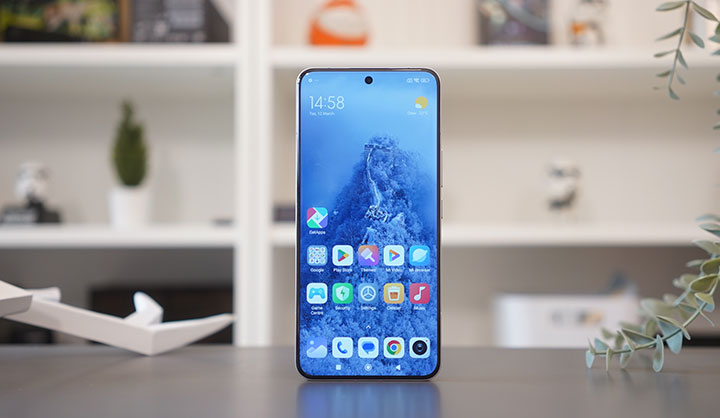
We’ve discussed a lot of the cosmetic changes on the HyperOS compared to MIUI 14 here 17.

The Interconnectivity feature allows all your devices that are signed into the Xiaomi account to be added in the Mi Smart Hub and manage them from there.
Just like the Xiaomi 14 15 we reviewed last month, the Xiaomi 14 Ultra also packs the latest Qualcomm Snapdragon 8 Gen 3 chipset with an Adreno 750 GPU.
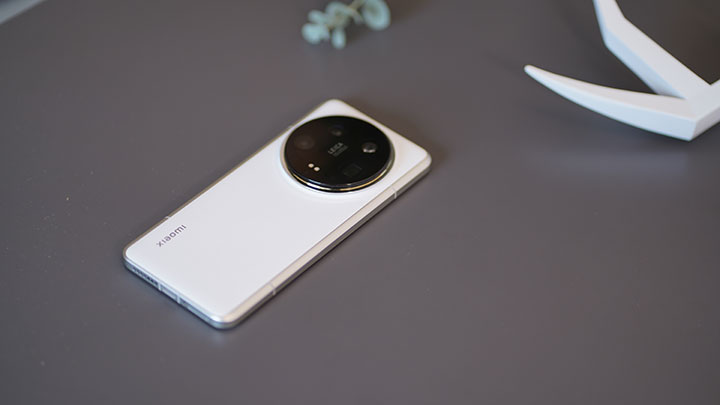
The chipset uses a single-core, high-performance ARM Cortex X4 running at a maximum clock speed of 3.3GHz, a triple-core ARM Cortex A720 @ 3.15GHz, a dual-core ARM Cortex A720 @ 2.96GHz, and a power-efficient, dual-core ARM Cortex A520 @ 2.26GHz.
This is paired with super-fast 16GB of LPDDR5x RAM and 512GB of UFS 4.0 internal storage with no external storage options available. Results from our synthetic benchmarks showed remarkable numbers, including an Antutu score that surpassed the 2 million mark.
Antutu Benchmark v10: 2,043,141
Antutu Storage:
4,146MB/s (Read), 3,158MB/s (Write),
1,520MB/s | 1,441MB/s (Random Read/Write)
GeekBench v6 CPU: 2,223 (Single core), 6,742 (Multi-core)
GeekBench v6 GPU: 13,844 (OpenCL), 16,124 (Vulkan)
PCMark Work 3.0: 16,021

This hardware combo makes the Xiaomi 14 Ultra perform very well. You can load up a couple dozen apps or games and it will not even choke, thanks to the 16GB RAM and additional 6GB of extended RAM. Playing games is a snitch and you can crank the graphic settings to Ultra and it will not feel a sweat.
As expected, Xiaomi 14 Ultra comes with a plethora of connectivity options. This includes an IR blaster, dual nano-SIM with 5G support, NFC, Bluetooth 5.4 and WiFi 7 compatibility.

The Xiaomi 14 Ultra comes with only 5,000mAh of battery (the China model gets a beefier 5,300mAh) and though that does not seem much considering the size and thickness of the device, it is enough to get you through the day.

In our PCMark Work 3.0 Battery test, the device scored 13 hours and 24 minutes at 50% brightness, zero volume and in airplane mode. This is pretty close to Xiaomi’s claim of 14.5 hours of constant use.
However, that’s a little bit lower compared to the results we got with the Xiaomi 14 25 (15 hours, 24 minutes) under the same conditions. We’d attribute that difference mostly to the bigger display size of the 14 Ultra.

Using our own Video Loop Test, the phone lasted 19 hours and 17 minutes playing a full HD 1080p video at 50% brightness, zero volume and in airplane mode.
We also tested it for gaming so we played a couple ranked games in Mobile Legends that lasted a total of 18 minutes with 6% of battery drained at 50% brightness, 50% volume using WiFi connection. That translates to about 5 hours of total game time in a single full charge. Not as good as the Xiaomi 14 in the same test.
So, we come to the conclusion of this review.
Just like other smartphones that utilizes Sony’s 1-inch type sensor, there is a significant compromise chassis design, weight and dimensions on the Xiaomi 14 Ultra. If you want an impressive camera system like that of the Xiaomi 14 Ultra, that will come with a price – not just in pesos but also in grams and millimeters.

If you can get past that inconvenience, then you are in for a big treat as the Xiaomi 14 Ultra is all that it promises to be — a very powerful device, impressive display and a camera powerhouse with that unique Leica treatment.

Unfortunately, the Xiaomi 14 Ultra will not be officially released here in the Philippines (only the Xiaomi 14 185 has been launched so far). Maybe it’s just too expensive for Xiaomi PH to carry in our market? We can only guess.
Nevertheless, it’s one heck of smartphone worthy of the flagship title.
What we liked about it:
* Impressive camera
* Top notch performance
* Super bright display
* IP68 Dust and Water Resistance
* IR Blaster
What we did not like:
* THICC
* HyperOS isn’t too different from MIUI
* No eSIM support
Xiaomi 14 Ultra specs:
6.73-inch LTPO AMOLED, 120Hz refresh rate, 1440×3200 pixels WQHD+ resolution, 522 ppi
Dolby Vision, HDR10+, 3,000 nits peak brightness
Xiaomi Shield Glass / Xiaomi Longjing Glass
Qualcomm Snapdragon 8 Gen 3
1x Cortex X4 3.3GHz, 3x Cortex A720 3.2GHz, 2x Cortex A720 3.0GHz, 2x Cortex A520 2.3GHz
Adreno 750 GPU
16GB LPDDR5x RAM
512GB UFS 4.0 internal storage
Leica Vario-Summilux 1:1.63-2.5/12-120 ASPH
50MP 1″ Sony LYT-900 23mm f/1.63-f/4.0 stepless variable aperture, AF, OIS, ALD
50MP Sony IMX858 75mm f/1.8 floating telephoto camera, AF, OIS
50MP Sony IMX858 120mm f/2.5 periscope telephoto camera
50MP Sony IMX858 12mm f/1.8 122° FOV ultrawide camera, AF
Dolby Vision up to 4K at 60fps, 4K HDR 4K at 30fps, 8K @ 30fps, 4K @ 120fps, 1080p @ 1920fps
32MP f/2.0 90° FOV, EIS front camera
HDR Dolby Vision up to 4K at 30 fps, 4K @ 60fps
5G, 4G/LTE, dual nano-SIM
Galileo: E1+E5a | GLONASS: G1 | Beidou | NavIC: L5
WiFi-7 capability
Bluetooth 5.4, Dual-Bluetooth
NFC
IR blaster
Stereo speakers
4-Mic Array
Dolby Atmos
IP68 Rating for dust and water resistance
Xiaomi HyperOS 1.0 (based on Android 14)
Under-display fingerprint sensor
USB-C 3.2 Gen 2
5,000mAh Li-Po battery, 90W HyperCharge, 80W wireless HyperCharge, reverse wireless charging
161.4 x 75.3 x 9.2mm (dimensions)
219.8 grams (weight)
Black, Blue, White, Titanium Gray

YugaTech.com is the largest and longest-running technology site in the Philippines. Originally established in October 2002, the site was transformed into a full-fledged technology platform in 2005.
How to transfer, withdraw money from PayPal to GCash
Prices of Starlink satellite in the Philippines
Install Google GBox to Huawei smartphones
Pag-IBIG MP2 online application
How to check PhilHealth contributions online
How to find your SIM card serial number
Globe, PLDT, Converge, Sky: Unli fiber internet plans compared
10 biggest games in the Google Play Store
LTO periodic medical exam for 10-year licenses
Netflix codes to unlock hidden TV shows, movies
Apple, Asus, Cherry Mobile, Huawei, LG, Nokia, Oppo, Samsung, Sony, Vivo, Xiaomi, Lenovo, Infinix Mobile, Pocophone, Honor, iPhone, OnePlus, Tecno, Realme, HTC, Gionee, Kata, IQ00, Redmi, Razer, CloudFone, Motorola, Panasonic, TCL, Wiko
Best Android smartphones between PHP 20,000 - 25,000
Smartphones under PHP 10,000 in the Philippines
Smartphones under PHP 12K Philippines
Best smartphones for kids under PHP 7,000
Smartphones under PHP 15,000 in the Philippines
Best Android smartphones between PHP 15,000 - 20,000
Smartphones under PHP 20,000 in the Philippines
Most affordable 5G phones in the Philippines under PHP 20K
5G smartphones in the Philippines under PHP 16K
Smartphone pricelist Philippines 2024
Smartphone pricelist Philippines 2023
Smartphone pricelist Philippines 2022
Smartphone pricelist Philippines 2021
Smartphone pricelist Philippines 2020
MOTOJEC says:
Can’t wait to get one 😁